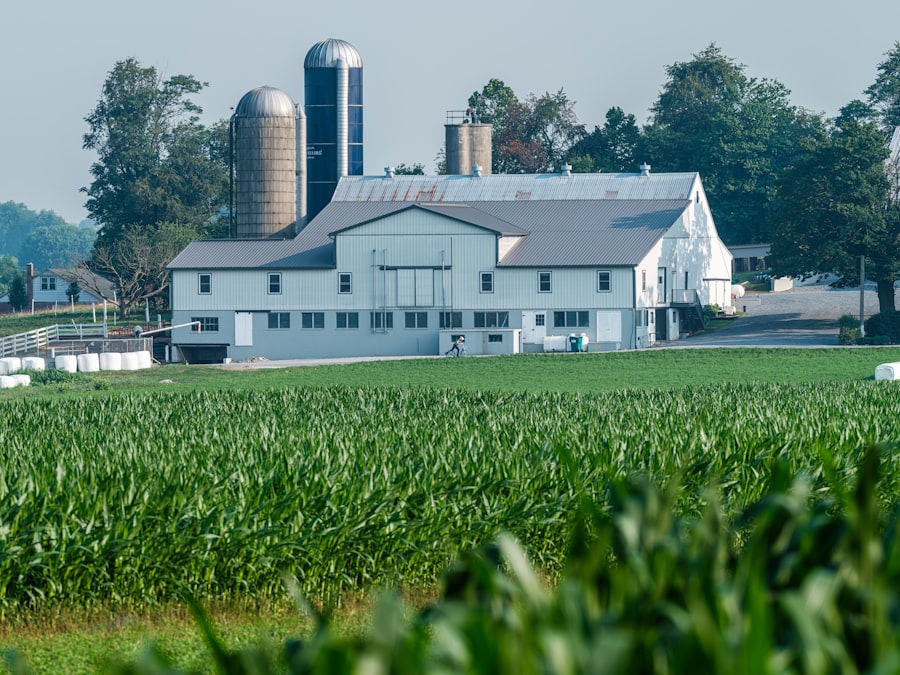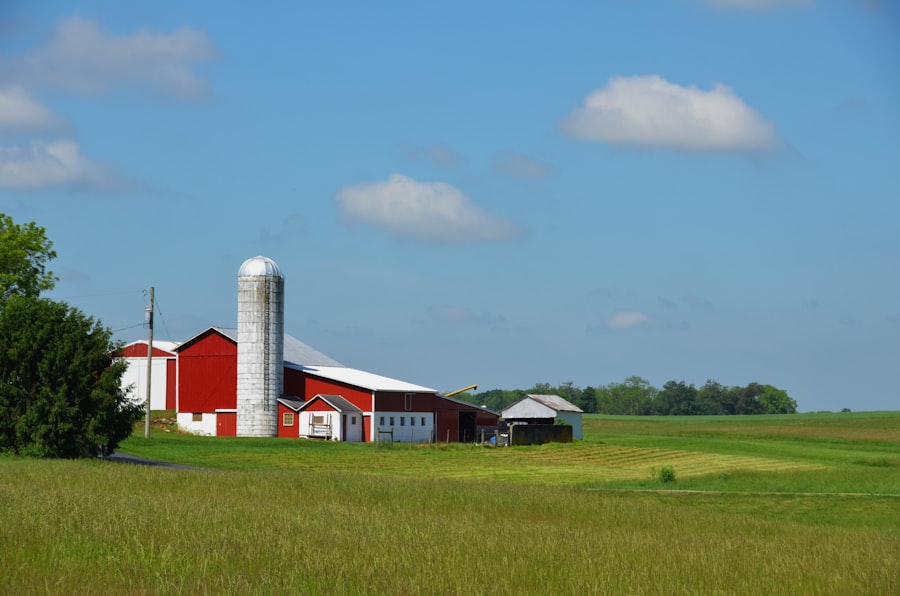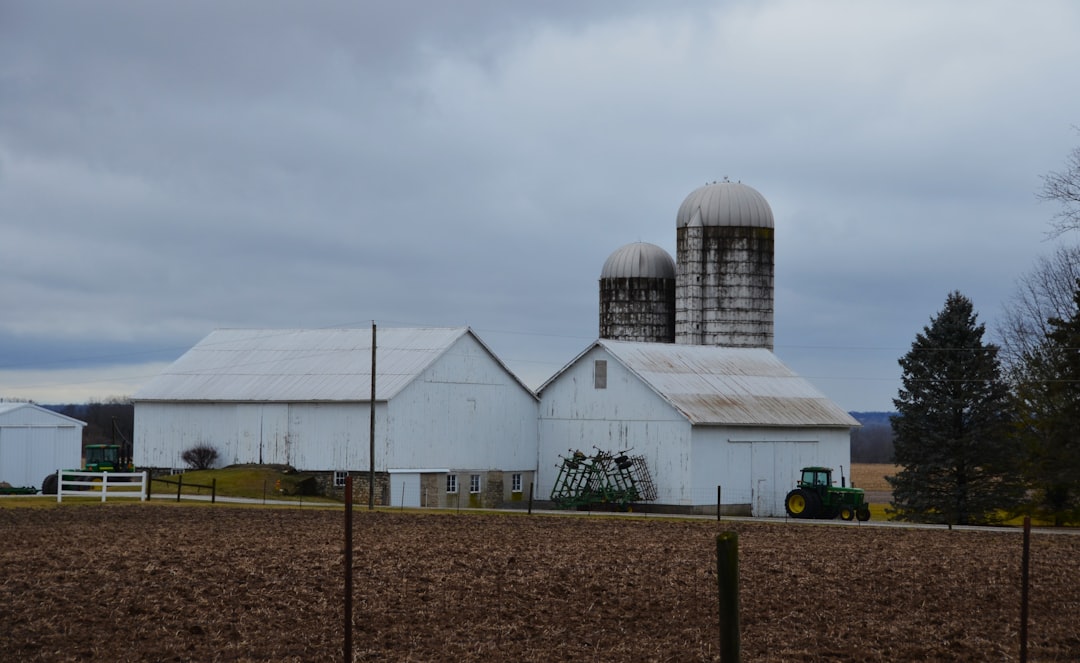Farm consolidation refers to the process by which smaller farms are absorbed into larger agricultural operations, resulting in a significant shift in the structure of the farming industry. This phenomenon has been observed across various regions and is often driven by economic pressures, technological advancements, and changing consumer demands. As farms grow in size, they tend to become more efficient, benefiting from economies of scale that allow them to produce goods at lower costs.
However, this trend raises important questions about the future of small-scale farming, rural communities, and the overall sustainability of agricultural practices. The implications of farm consolidation extend beyond mere economics; they touch on social, environmental, and cultural dimensions of rural life. As larger agribusinesses dominate the landscape, smaller farms often struggle to compete, leading to a decline in the number of family-owned operations.
This shift can result in the loss of traditional farming practices and a decrease in biodiversity, as monoculture becomes more prevalent. Understanding the factors that contribute to farm consolidation is essential for policymakers, farmers, and consumers alike, as it shapes the future of food production and rural economies.
Key Takeaways
- Farm consolidation has been a long-standing trend in agriculture, leading to larger and fewer farms.
- Government intervention in agriculture has a historical context, with policies and programs aimed at stabilizing the industry and supporting farmers.
- Government policies can either promote or hinder farm consolidation, depending on their focus and implementation.
- Subsidies and support programs can contribute to farm consolidation by favoring larger farms with more resources.
- Government regulations and trade agreements can also impact farm consolidation, either by promoting or limiting the growth of large-scale farming operations.
Historical Perspective on Government Involvement in Agriculture
The history of government involvement in agriculture is long and complex, dating back to ancient civilizations where rulers would implement policies to ensure food security for their populations. In modern times, particularly in the United States and Europe, government intervention has taken on various forms, including subsidies, price supports, and regulatory frameworks designed to stabilize markets and support farmers. The New Deal era in the 1930s marked a significant turning point, as the U.S.
government introduced programs aimed at revitalizing the agricultural sector during the Great Depression. Over the decades, government policies have evolved in response to changing economic conditions and societal needs.
However, this growth came with unintended consequences, such as environmental degradation and the marginalization of small farms. As consolidation began to take root, policymakers grappled with the challenge of balancing support for large-scale agriculture while ensuring the viability of smaller operations.
The Impact of Government Policies on Farm Consolidation

Government policies play a pivotal role in shaping the landscape of farm consolidation. Policies that favor large-scale operations often inadvertently disadvantage smaller farms, creating an uneven playing field. For instance, access to credit and financial assistance is frequently more accessible for larger agribusinesses, which can leverage their size to secure favorable loan terms.
In contrast, smaller farms may struggle to obtain financing necessary for expansion or modernization, further entrenching their vulnerability in a competitive market. Moreover, regulatory frameworks can also influence consolidation trends. Policies that promote efficiency and productivity may inadvertently encourage larger farms to expand at the expense of smaller ones.
For example, environmental regulations that require costly compliance measures can disproportionately impact small farmers who lack the resources to adapt. As a result, many are forced to sell their land or merge with larger entities, contributing to the ongoing trend of consolidation within the agricultural sector.
The Role of Subsidies and Support Programs in Farm Consolidation
| Subsidy Program | Objective | Impact on Farm Consolidation |
|---|---|---|
| Direct Payment Subsidy | To provide income support to farmers | Can contribute to larger farms acquiring more land and smaller farms consolidating or exiting the industry |
| Crop Insurance Subsidy | To mitigate financial risks for farmers | May encourage larger farms to expand and smaller farms to consolidate or exit due to reduced risk |
| Price Support Programs | To stabilize commodity prices and income for farmers | Can lead to larger farms benefiting more from price stabilization, contributing to farm consolidation |
Subsidies and support programs are critical components of government involvement in agriculture, designed to stabilize income for farmers and ensure food security. However, these financial incentives can also accelerate farm consolidation by disproportionately benefiting larger operations. For instance, direct payments and crop insurance programs often favor those who produce high volumes of commodities, which typically aligns with larger farms that can absorb the costs associated with production.
Additionally, support programs that encourage innovation and technological adoption may inadvertently favor larger agribusinesses that have the capital to invest in advanced machinery and practices. As these larger entities become more efficient and profitable due to government support, smaller farms may find it increasingly difficult to compete. This dynamic creates a cycle where consolidation becomes self-reinforcing; as larger farms thrive under favorable policies, smaller farms continue to decline, leading to a more concentrated agricultural landscape.
Government Regulations and Farm Consolidation
Regulations governing agricultural practices can significantly influence farm consolidation trends. While many regulations aim to protect public health and the environment, they can also create barriers for smaller farms that lack the resources to comply with stringent requirements. For example, regulations related to food safety, labor standards, and environmental protection often necessitate investments in infrastructure and technology that smaller operations may not be able to afford.
Furthermore, zoning laws and land-use regulations can restrict opportunities for small farmers to expand or diversify their operations. In many cases, these regulations are designed with larger agricultural enterprises in mind, inadvertently sidelining smaller farms that could contribute to local economies and food systems. As a result, government regulations can serve as both a catalyst for consolidation and a barrier for those seeking to maintain diverse agricultural practices within their communities.
The Influence of Trade Agreements on Farm Consolidation

Trade agreements have a profound impact on farm consolidation by shaping market access and competition within the agricultural sector. As countries enter into trade agreements that lower tariffs and open markets, larger agribusinesses often emerge as primary beneficiaries due to their ability to scale production and meet international demand. This dynamic can place additional pressure on smaller farms that may struggle to compete with the lower prices offered by larger producers.
Moreover, trade agreements can lead to shifts in crop production patterns as farmers respond to global market demands. For instance, if a trade agreement favors certain commodities over others, farmers may feel compelled to specialize in those crops to remain competitive. This specialization can further exacerbate consolidation trends as farmers abandon diverse cropping systems in favor of monoculture practices that align with market demands dictated by trade policies.
Government Intervention in Land Use and Ownership
Government intervention in land use and ownership is another critical factor influencing farm consolidation. Policies related to land tenure can significantly affect who has access to land and how it is utilized within agricultural systems. In many regions, large agribusinesses have been able to acquire vast tracts of land through favorable financing options or government-backed loans, while smaller farmers face challenges in securing land tenure due to high costs or restrictive regulations.
Additionally, land-use policies that prioritize industrial agriculture can marginalize small-scale farmers who rely on diverse cropping systems or sustainable practices. As land becomes increasingly concentrated in the hands of a few large entities, rural communities may experience economic decline as local farmers are pushed out of business. This concentration not only impacts food production but also threatens the social fabric of rural areas where family farms have historically played a vital role.
The Role of Government in Promoting Sustainable Agriculture
In recent years, there has been a growing recognition of the need for sustainable agricultural practices that prioritize environmental health and social equity. Governments have begun to play a more active role in promoting sustainability through various initiatives aimed at supporting small-scale farmers and encouraging regenerative practices. These efforts include funding for research on sustainable farming techniques, grants for conservation programs, and incentives for farmers who adopt environmentally friendly practices.
However, despite these initiatives, challenges remain in effectively integrating sustainability into existing agricultural policies. Many government programs still prioritize productivity over ecological health, inadvertently perpetuating consolidation trends that favor large-scale operations. To truly promote sustainable agriculture, policymakers must reevaluate existing frameworks and ensure that support mechanisms are accessible to all farmers—regardless of size—while fostering practices that enhance biodiversity and soil health.
The Effects of Government Funding on Farm Consolidation
Government funding plays a crucial role in shaping the agricultural landscape by providing financial resources for various initiatives aimed at supporting farmers. However, the distribution of these funds can significantly influence farm consolidation trends. Often, funding programs are designed with larger operations in mind, leading to disparities in access for smaller farms that may lack the capacity to navigate complex application processes or meet eligibility criteria.
As larger agribusinesses receive substantial funding for expansion or technological upgrades, smaller farms may find themselves at a disadvantage when competing for market share. This funding imbalance can create a cycle where larger farms continue to grow while smaller operations struggle to survive. To address these disparities, it is essential for governments to implement funding programs that prioritize equitable access for all farmers and support diverse agricultural practices that contribute to resilient food systems.
The Role of Government in Addressing Social and Economic Impacts of Farm Consolidation
The social and economic impacts of farm consolidation extend beyond individual farmers; they affect entire communities and rural economies. As small farms disappear due to consolidation pressures, local economies may suffer from job losses and reduced economic activity. Additionally, the cultural heritage associated with family farming is at risk as traditional practices fade away in favor of industrial agriculture.
Governments have a responsibility to address these social and economic impacts through targeted policies that support rural communities and promote equitable access to resources. This may include investing in rural development initiatives that create jobs outside of agriculture or providing support for small-scale farmers through grants or technical assistance programs. By prioritizing community resilience alongside agricultural productivity, governments can help mitigate the negative effects of farm consolidation while fostering vibrant rural economies.
The Future of Government’s Role in Farm Consolidation
The future of government involvement in farm consolidation will likely be shaped by ongoing debates about food security, environmental sustainability, and rural development. As pressures mount on small farms from various fronts—economic competition, regulatory burdens, and changing consumer preferences—policymakers must navigate complex challenges while striving for equitable solutions. To foster a more sustainable agricultural landscape that supports both large-scale operations and small family farms alike, governments will need to rethink existing policies and prioritize inclusivity within their frameworks.
By promoting diverse farming practices and ensuring equitable access to resources, governments can play a pivotal role in shaping an agricultural future that balances productivity with social responsibility—ultimately leading toward a more resilient food system for generations to come.
The role of government in farm consolidation is a complex and multifaceted issue that has significant implications for the agricultural sector and rural communities. Government policies can influence farm consolidation through subsidies, tax incentives, and regulations that may favor larger agricultural enterprises over smaller family farms.
For a deeper understanding of how these dynamics play out, you can explore a related article on this topic by visiting this page. This article delves into the various factors driving farm consolidation and the potential consequences for the agricultural landscape.
WATCH NOW! Why America’s Heartland Is Disappearing Fast
FAQs
What is farm consolidation?
Farm consolidation refers to the trend of small farms being bought out or merged with larger farms, leading to fewer but larger agricultural operations.
What is the role of government in farm consolidation?
The government plays a role in farm consolidation through policies and regulations that can either encourage or discourage consolidation. This can include subsidies, tax incentives, and antitrust laws.
How do government subsidies impact farm consolidation?
Government subsidies can impact farm consolidation by providing financial support to larger farms, making it easier for them to acquire smaller farms and expand their operations.
What are some examples of government policies that can impact farm consolidation?
Examples of government policies that can impact farm consolidation include agricultural subsidies, land use regulations, and antitrust laws that regulate mergers and acquisitions in the agricultural sector.
What are the potential effects of farm consolidation on the agricultural industry?
Farm consolidation can lead to increased efficiency and productivity, but it can also result in fewer opportunities for small farmers, reduced biodiversity, and potential negative impacts on rural communities.
